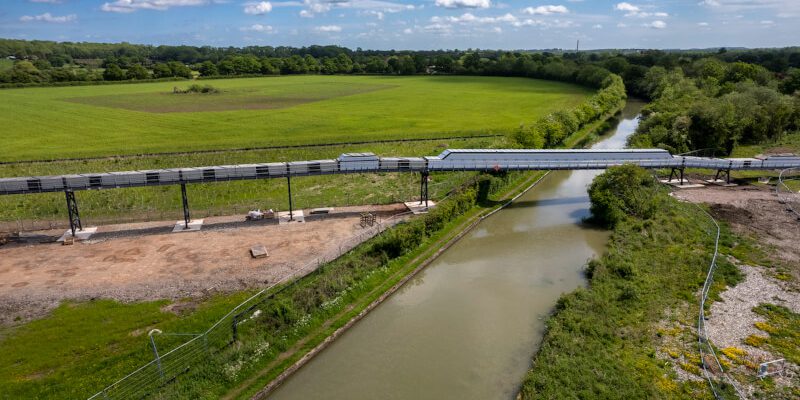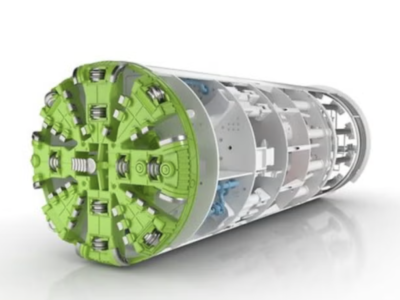
In order to carry over 750,000 tons of dug material over the Grand Union Canal where it will be reused in other locations on the project, a new conveyor has commenced operating on HS2’s Long Itchington Wood Tunnel site.
Construction of the 254m-long machine to move material being excavated from Long Itchington Wood Tunnel and a railway cutting in the same location in Warwickshire, was done by HS2’s civil contractor for the Midlands, Balfour Beatty Vinci (BBV).
Removing the equivalent of almost 30,000 HGVs from local roads, this new shortcut will decrease impacts on the local community and cutting carbon. Before dismantling and rebuilding at Water Orton as part of a 1,200m-long conveyor, this conveyor is due to operate until early 2023.
According to HS2 Ltd senior project manager Alan Payne: “The organization was working closely with its supply chain to reduce carbon across the project and find construction solutions to minimize disruption around the work sites.”
He continued: “It’s initiatives like this that will help us achieve our ambitious target of being net-zero carbon as a project from 2035, helping to put HS2 at the center of Britain’s sustainable transport network.”
“The joint venture aimed to reduce the impact on local communities wherever possible and to reduce carbon across the project. Our new conveyor does both. We can now move material from our tunnel boring activity and reuse it at other locations along the route. This will reduce construction traffic and, ultimately, help us to contribute to HS2’s carbon targets,” said BBV senior plant and equipment manager Ed Morgan.
He also added: “We’ll continue to embrace innovation and adapt our construction methods to leave a lasting positive legacy on the areas we operate in.”
The amount of mudstone and soil from excavating this twin-bore tunnel will be about 500,000 tons. While this quantity is processed at an on-site slurry treatment plant and separated out before being transported by the conveyer to be used to build embankments along the HS2 route, an additional 250,000 tons of material will come from excavations for a railway cutting, which will also be transported by the conveyor.
















